Resultados de la búsqueda67 resultados
-

Job stress and emotional exhaustion at work in Spanish workers: Does unhealthy work affect the decision to drive?
Francisco Alonso, Cristina Esteban, Adela González, Elisa Alfaro, Sergio Useche
(2020). ArticlePLoS ONE. Num.15(1): e0227328
Objectives The purpose of this study was to assess the relationships among the following elements: unhealthy work indicators (job stress and emotional exhaustion at work), the decision to drive (or not), and driving crashes suffered by Spanish workers. Methods For this cross-sectional study, a full sample of 1,200 Spanish drivers (44% women and 56%men) was used, their mean age being 42.8 years. They answered a questionnaire divided into three sections: demographic and driving-related data; burnout, job stress, and life stress; and self-reported road behaviors and driving safety indicators. Results Overall, 41.6% of drivers reported emotional exhaustion at work. Furthermore, 80.2% of...
Objectives The purpose of this study was to assess the relationships among the following elements: unhealthy work indicators (job stress and emotional exhaustion at work), the decision to drive (or not), and driving crashes suffered by Spanish workers. Methods For this cross-sectional study, a full sample of 1,200 Spanish drivers (44% women and 56%men) was used, their mean age being 42.8 years. They answered a questionnaire divided into three sections: demographic and driving-related data; burnout, job stress, and life stress; and self-reported road behaviors and driving safety indicators. Results Overall, 41.6% of drivers reported emotional exhaustion at work. Furthermore, 80.2% of the participants showing substantial signs of job stress or exhaustion had experienced one or more important stressful life events during the previous year. Job stress was associated with the number of driving crashes suffered along the last 3 years. Also, and especially in sit-uations where drivers admit not feeling well enough to drive, job stress and emotional exhaustion seem to be independent from the decision to drive, and from perceiving these variables as potential impairers of driving performance. Conclusions First of all, this study showed a high prevalence of job stress and emotional exhaustion symptoms experienced at work by Spanish workers. Moreover, significant relationships were found among self rated driving performance, workplace stress and burnout indicators, which suggests that job stress and emotional exhaustion levels may, indeed, impair driving performance, but they do not influence the decision to drive or not. In other words, even when they are significantly affected by job stress or emotional exhaustion at work, most Spanish drivers still drive.
Leer más Ocultar DOI: 10.1371/journal.pone.0227328ISSN: 1932-6203 -
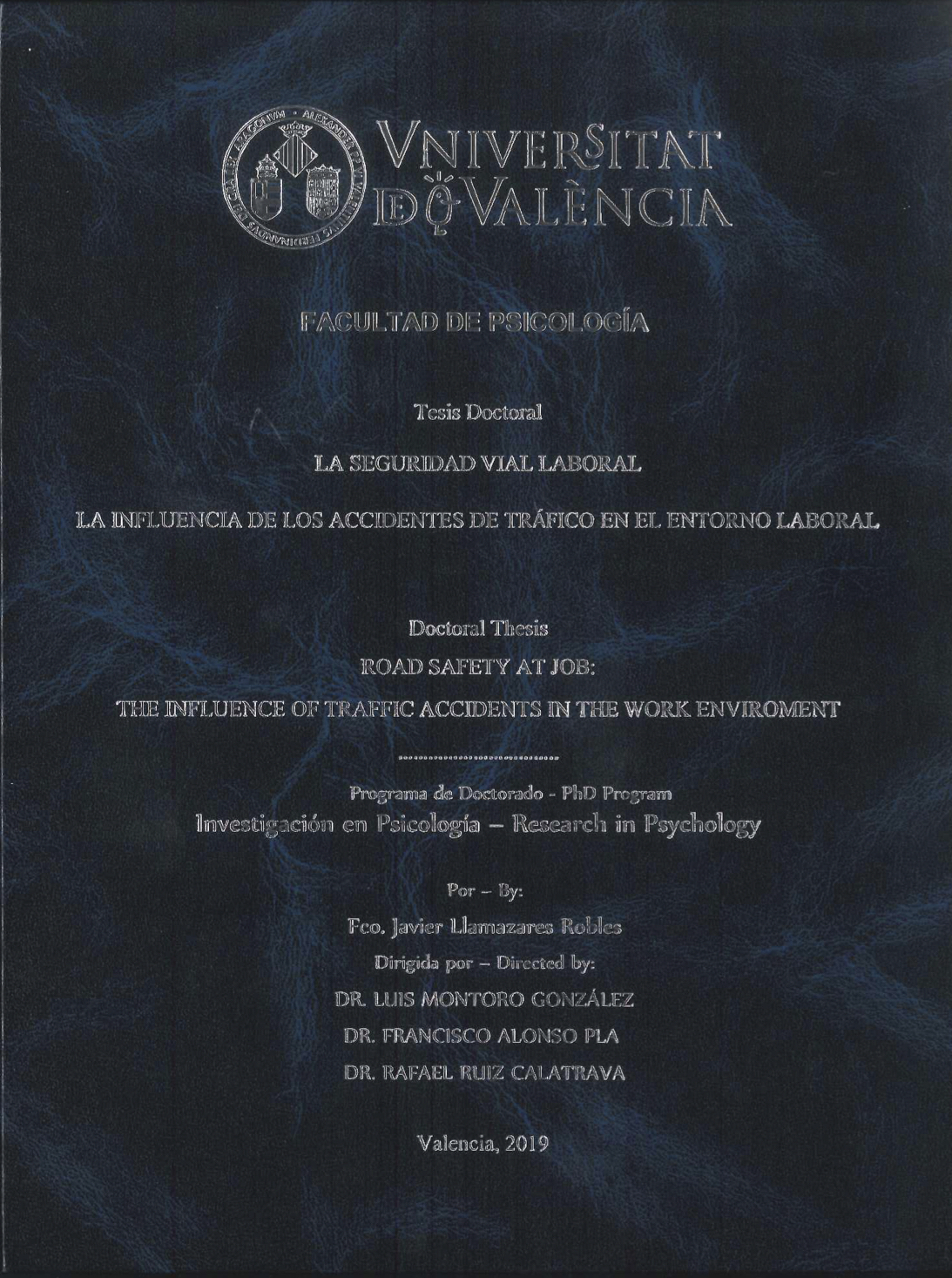
La Seguridad Vial Laboral. La influencia de los Accidentes de Tráfico en el entorno Laboral.
Francisco Javier Llamazares Robles
(2019). TesisDirectores: Luis Montoro, Francisco Alonso, Rafael Ruiz
Calificación: Sobresaliente "cum laude"
-

More Aware, More Protected: Do Road Safety Skills Predict the use of Passive Safety Elements among Teenagers
Sergio Useche, Francisco Alonso, Luis Montoro, Leandro Garrigós.
(2019). ArticleBMJ Open. Num.9:e035007
Objective This study had two objectives: first, to test the effects of sociodemographic variables, and the effects of three key road safety skills (knowledge–risk perception–attitudes) on the use of passive safety elements (PSEs) among teenagers; and second, to assess the differential impact of the study variables on PSEs use from a gender-based perspective. Setting and participants This cross-sectional study was framed in the paradigm of primary care, and it involved students from several educational centres in Spain. A sample of 827 Spanish teenagers (52.4% females and 47.6% males) with a mean age of M=14.41–7 (12–19) years was used. Results Through SEM modelling, we found that the use...
Objective This study had two objectives: first, to test the effects of sociodemographic variables, and the effects of three key road safety skills (knowledge–risk perception–attitudes) on the use of passive safety elements (PSEs) among teenagers; and second, to assess the differential impact of the study variables on PSEs use from a gender-based perspective. Setting and participants This cross-sectional study was framed in the paradigm of primary care, and it involved students from several educational centres in Spain. A sample of 827 Spanish teenagers (52.4% females and 47.6% males) with a mean age of M=14.41–7 (12–19) years was used. Results Through SEM modelling, we found that the use of PSEs is largely explained by psychosocial variables through the mediation of three road safety skills: risk perception (β=0.103***), rule knowledge (β=0.095*) and attitudes towards road safety (β=0.186***). Furthermore, multigroup analyses showed that, although most variables explain the use of PSEs among teenagers in a similar way, key gender-based differences exist in this regard. Conclusions Road safety skills have a significant effect on the use of PSEs among Spanish teenagers, and gender explains some differences in the mechanisms which predict them. Also, in the study we discuss the need for strengthening school-based interventions aimed at helping this vulnerable group of road users acquire and develop positive behavioural competences.
Leer más Ocultar DOI: 10.1136/bmjopen-2019-035007ISSN: 2044-6055 -
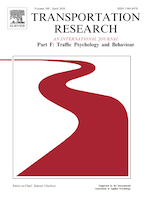
Validation of the Multidimensional Driving Style Inventory (MDSI) in Professional Drivers: How does it work in transportation workers?
Sergio Useche, Boris Cendales, Francisco Alonso, Juan C. Pastor, Luis Montoro
(2019). ArticleTransportation Research Part F: Traffic Psychology and Behaviour. Num.67:155-163
The Multidimensional Driving Style Inventory or MDSI constitutes, perhaps, the most relevant tool for measuring driving styles. Since its releasing in 2004, it has been applied worldwide to different samples of drivers, showing an important value and utility for road safety. However, empirical studies using the MDSI on professional drivers are scarce and, to the date, there is no validated version of the instrument in this workforce yet. Objectives: This study had two aims. First, to describe in detail the validation of the Taubman-Ben-Ari’s MDSI among professional drivers and, second, to test its convergent validity with other key relevant factors present in the work environment of this...
The Multidimensional Driving Style Inventory or MDSI constitutes, perhaps, the most relevant tool for measuring driving styles. Since its releasing in 2004, it has been applied worldwide to different samples of drivers, showing an important value and utility for road safety. However, empirical studies using the MDSI on professional drivers are scarce and, to the date, there is no validated version of the instrument in this workforce yet. Objectives: This study had two aims. First, to describe in detail the validation of the Taubman-Ben-Ari’s MDSI among professional drivers and, second, to test its convergent validity with other key relevant factors present in the work environment of this particular population: driving anger, job strain and occupational driving crashes. Method: The data used for this validation was gathered from a representative sample of 752 Colombian professional drivers and analyzed by means of competitive Confirmatory Factor Analyses (CFAs), assessing psychometric properties and obtaining an optimized structure for the instrument applied to active transportation workers. Results: The outcomes of this study suggest a clear factorial structure, adequate model fit, factorial weights, reliability and internal consistency, keeping the re-evaluated four-factor structure of the questionnaire: Reckless & Careless (F1); Anxious (F2); Angry & Hostile (F3); and Patient & Careful (F4). Conclusion: This applied research supports the hypothesis that the validated version of MDSI in professional drivers, together with further measures applied to other work environment factors, may play a relevant role in the improvement of driving safety and injury prevention for this vulnerable workforce from the perspective of occupational research in transportation.
Leer más Ocultar DOI: 10.1016/j.trf.2019.10.012ISSN: 1369-8478 -
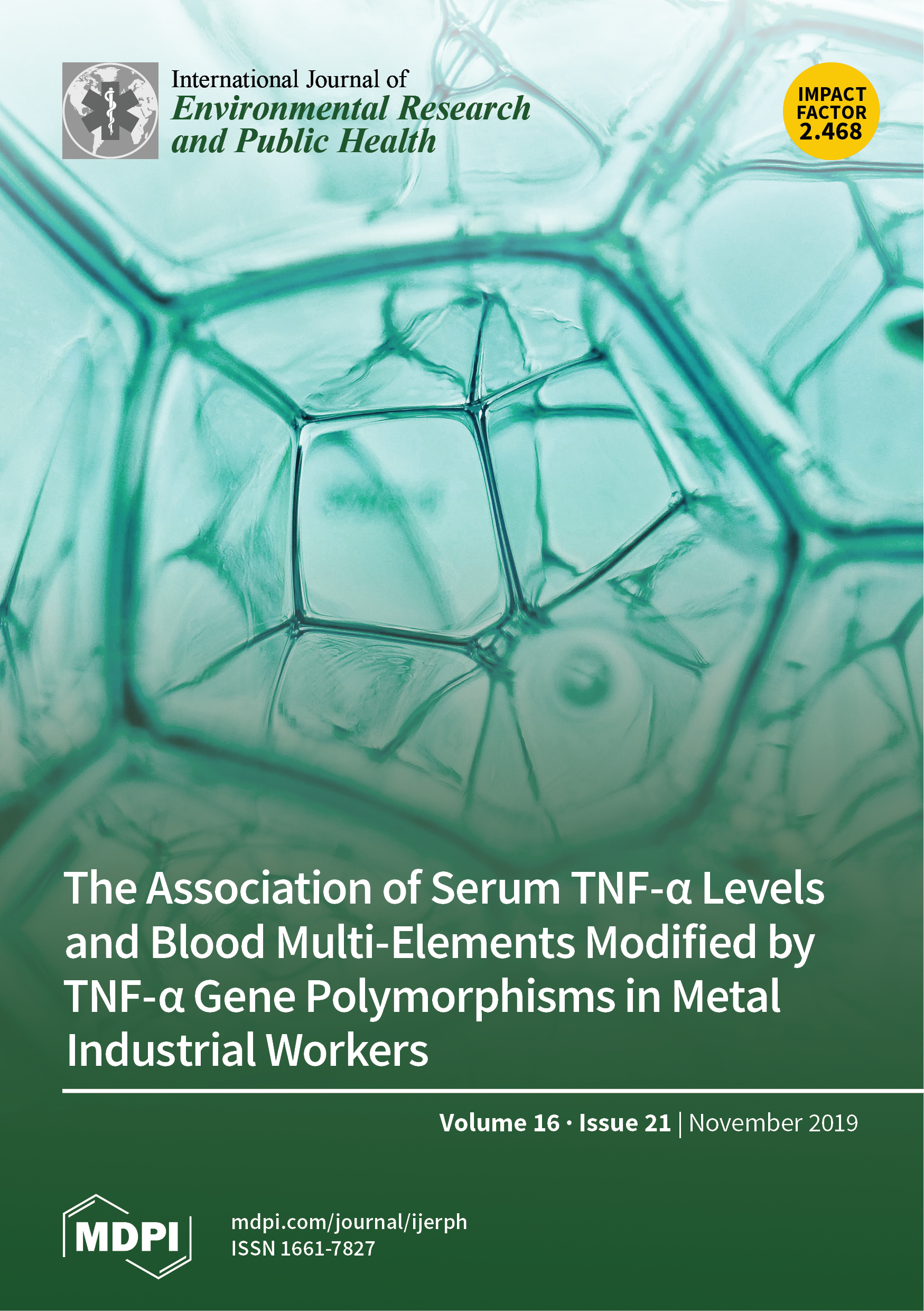
Importance of social and health-related problems: Do Spaniards give them the significance they actually deserve?
Francisco Alonso, Cristina Esteban, Andrea Serge, Macarena Tortosa
(2019). ArticleInternational Journal of Environmental Research and Public Health. Num.16(21), 4090
Social and health problems imply an impact on society. The main objective of this study is to provide an overview of how Spanish people perceive cancer, terrorism, cardiovascular diseases, crime, AIDS, drugs, and traffic accidents, finding out whether they assess the importance of these issues in correspondence with their actual severity. The study used a full sample of 1206 Spaniards (51.6% females and 48.4% males) who responded to a computer-assisted telephone interviewing (CATI) survey on the significance of these social and health-related problems, assessed through a zero to ten Likert scale. The perceived severity of the problems was considered taking into account the official data of...
Social and health problems imply an impact on society. The main objective of this study is to provide an overview of how Spanish people perceive cancer, terrorism, cardiovascular diseases, crime, AIDS, drugs, and traffic accidents, finding out whether they assess the importance of these issues in correspondence with their actual severity. The study used a full sample of 1206 Spaniards (51.6% females and 48.4% males) who responded to a computer-assisted telephone interviewing (CATI) survey on the significance of these social and health-related problems, assessed through a zero to ten Likert scale. The perceived severity of the problems was considered taking into account the official data of deaths reported by governmental institutions. For the comparison of mean values, the One-way Analysis of Variance (ANOVA) test was used. Results show high average values for all the problems. The most concerning elements are cancer (M = 9.28 ± 1.24) and terrorism (M = 9.22 ± 1.47). Cardiovascular diseases have the lowest scores (M = 8.29 ± 1.64). There is a good adjustment between real and subjective perception, but some issues are either underestimated or overestimated. Women assessed all of them as more important than men, and people over 65 gave all the issues more value than younger people. It is important that Spaniards understand the objective severity of these issues, thus allowing for more interventions by governments, education, and mass media.
Leer más Ocultar DOI: 10.3390/ijerph16214090ISSN: 1661-7827 -
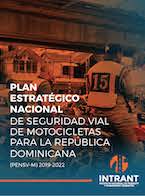
Plan Estratégico Nacional de Seguridad Vial de Motores para la República Dominicana 2019-2022
Francisco Alonso, Cristina Esteban, Armando Ortuño, Juan J. Alba, Jose L. Velarte, Andrea Serge, Sergio Useche
(2019). LlibreLas motocicletas y los ciclomotores son un medio de transporte cada vez más utilizado en todo el mundo. Al mismo tiempo, las motocicletas son un medio de trasporte menos seguro, ya que se enfrenta a circunstancias que pueden resultar adversas, tales como el estado de la carretera y el clima. Este hecho, unido a la menor protección que ofrece a sus usuarios, y al probable error humano en la conducción por múltiples causas como las distracciones, convierte a los motociclistas y a sus pasajeros en personas mucho más vulnerables ante un accidente. Estos elementos, unidos a la idiosincrásica del sector de ciclomotores y motocicletas de la República Dominicana, hacen necesario un Plan de...
Las motocicletas y los ciclomotores son un medio de transporte cada vez más utilizado en todo el mundo. Al mismo tiempo, las motocicletas son un medio de trasporte menos seguro, ya que se enfrenta a circunstancias que pueden resultar adversas, tales como el estado de la carretera y el clima. Este hecho, unido a la menor protección que ofrece a sus usuarios, y al probable error humano en la conducción por múltiples causas como las distracciones, convierte a los motociclistas y a sus pasajeros en personas mucho más vulnerables ante un accidente. Estos elementos, unidos a la idiosincrásica del sector de ciclomotores y motocicletas de la República Dominicana, hacen necesario un Plan de medidas centradas exclusivamente en este colectivo.
Leer más Ocultar ISBN: 978-9945-9186-0-1 -

Perceived safety and attributed value as predictors of the intention to use autonomous vehicles: A national study with Spanish drivers
Luis Montoro, Sergio Useche, Francisco Alonso, Ignacio Lijarcio, Patricia Bosó-Seguí, Ana Martí-Belda
(2019). ArticleSafety Science. Num.120:865-876
Sooner than later, the growing development of Autonomous Vehicles (AVs) will represent not only an imminent transformation of transportation dynamics, but also further advantages for their users, including many improvements in road crash prevention, efficiency and sustainability. However, different concerns and constraints may affect the intention of adopting this technology among its potential customers, especially for what concerns those constraints related to safety, viability and stability. The objective of this study was to examine the influence of perceived safety and value attributed to the AV in the drivers’ intention to use it, considering the drivers’ demographic factors, driving...
Sooner than later, the growing development of Autonomous Vehicles (AVs) will represent not only an imminent transformation of transportation dynamics, but also further advantages for their users, including many improvements in road crash prevention, efficiency and sustainability. However, different concerns and constraints may affect the intention of adopting this technology among its potential customers, especially for what concerns those constraints related to safety, viability and stability. The objective of this study was to examine the influence of perceived safety and value attributed to the AV in the drivers’ intention to use it, considering the drivers’ demographic factors, driving habits, interaction with information technologies and self-reported safety records (using conventional vehicles) as potential predictors. For this cross-sectional study, data from 1205 drivers of conventional vehicles were analyzed through a structural equation modeling (SEM) approach. The intention to use autonomous vehicles could be predicted through demographic and driving-related factors, as well as by the level of interaction of individuals with information and communication technologies (ITCs). It was also found that the perceived safety of AVs and their attributed value for transport and road safety mediate the associations between drivers’ features and the final intention of using (or not) autonomous vehicles. The results of this study suggest that perceived safety and the value attributed to AVs significantly influence the intention of adopting it. In other words, a deeper emphasis on the safety, causality prevention and efficiency-related benefits may strengthen the acceptance of this new technology and enhance its progressive inclusion in transport dynamics among drivers.
Leer más Ocultar DOI: 10.1016/j.ssci.2019.07.041ISSN: 0925-7535 -

Well-being, behavioral patterns and cycling crashes of different age groups in Latin America: Are aging adults the safest cyclists?
Sergio Useche, Francisco Alonso, Jaime Sanmartín, Luis Montoro, Boris Cendales
(2019). ArticlePLoS ONE. Num.14(8): e0221864
Objectives This study aimed at analyzing the cycling safety-related factors and the mental health indicators of elderly cyclists in comparison with other age groups. Methods For this cross-sectional study, we analyzed the data of 911 bicyclists from two Latin American countries that have been experiencing a substantial growth of urban cycling during the last few years: Colombia and Argentina. Participants responded to an e-questionnaire on bicycling behaviors, mental health and cycling safety. Results Aging adults reported lower rates of risky behaviors and traffic crashes (around .38 in five years), and, on the other hand, more cycling protective behaviors, a higher risk perception...
Objectives This study aimed at analyzing the cycling safety-related factors and the mental health indicators of elderly cyclists in comparison with other age groups. Methods For this cross-sectional study, we analyzed the data of 911 bicyclists from two Latin American countries that have been experiencing a substantial growth of urban cycling during the last few years: Colombia and Argentina. Participants responded to an e-questionnaire on bicycling behaviors, mental health and cycling safety. Results Aging adults reported lower rates of risky behaviors and traffic crashes (around .38 in five years), and, on the other hand, more cycling protective behaviors, a higher risk perception and a better knowledge of traffic norms than both other adults (26–50 years old) and young cyclists (<26). Cycling behaviors and crashes were found to be significantly related to mental health indicators, the latter being higher in aging cyclists. However, this population remains more prone to distractions experienced while cycling than other age groups. Conclusions Although the behavioral features of aging adults were comparatively “safer” than the ones displayed by other age groups, factors such as cycling distractions and this population’s over-representation in traffic crashes suggest the need of enforcing policymaking for a better integration of this age segment in alternative transportation dynamics.
Leer más Ocultar DOI: 10.1371/journal.pone.0221864ISSN: 1932-6203 -
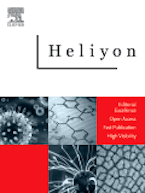
Trait driving anger and driving styles among Colombian professional drivers
Sergio Useche, Boris Cendales, Francisco Alonso, Luis Montoro, Juan C. Pastor
(2019). ArticleHeliyon. Num.5(8): e02259
This study analyzes the association between trait driving anger and driving styles in a sample of Colombian professional drivers. Additionally, the internal and external validity of the Deffenbacher's Driving Anger Scale (DAS-14) was examined in the study population. The DAS-14 and the Spanish Version of the Multidimensional Driving Style Inventory (S-MDSI) were administered to 492 urban bus and taxi operators. Average trait driving anger scores in the study population were similar to those reported in previous validation studies from Spain, Argentina, China, and Malaysia. After deleting three cross-loaded items, confirmatory factor analyses revealed a three-dimensional latent structure for...
This study analyzes the association between trait driving anger and driving styles in a sample of Colombian professional drivers. Additionally, the internal and external validity of the Deffenbacher's Driving Anger Scale (DAS-14) was examined in the study population. The DAS-14 and the Spanish Version of the Multidimensional Driving Style Inventory (S-MDSI) were administered to 492 urban bus and taxi operators. Average trait driving anger scores in the study population were similar to those reported in previous validation studies from Spain, Argentina, China, and Malaysia. After deleting three cross-loaded items, confirmatory factor analyses revealed a three-dimensional latent structure for the DAS-14, similar but not equal to the previous Spanish speaking validations. This factorial structure fits the data reasonably well. Finally, linear regression analyses revealed that the three factors of the DAS-14 (impeded progress by others, illegal driving, and direct hostility) significantly predict adaptive and maladaptive driving styles. Overall, the results of this study suggest that the DAS-14 is a reasonably reliable measure of driving anger traits among professional drivers, and it also provides relevant insights for the prevention of risky driving styles in this occupational group.
Leer más Ocultar DOI: 10.1016/j.heliyon.2019.e02259ISSN: 2405-8440 -

Psychosocial Work Factors, Job Stress and Strain at the Wheel: Validation of the Copenhagen Psychosocial Questionnaire (COPSOQ) in Professional Drivers
Sergio Useche, Luis Montoro, Francisco Alonso, Juan C. Pastor
(2019). ArticleFrontiers in Psychology. Num.10:1531
Introduction: Psychosocial work environment has been related to many negative health outcomes in different workforces. However, evidence in this regard is still limited in the case of transport workers, and most of the tools used in research, often excessively generic, do not fully consider the specific key stressors, and adverse issues present in the psychosocial environment of professional driving. Objective: Thus, the purpose of this study was to obtain a complete description of the validation of measurement applied to psychosocial factors at work in professional drivers, using the Enterprise version (2018) of COPSOQ-III. Methods: The data was collected from 726 Spanish professional...
Introduction: Psychosocial work environment has been related to many negative health outcomes in different workforces. However, evidence in this regard is still limited in the case of transport workers, and most of the tools used in research, often excessively generic, do not fully consider the specific key stressors, and adverse issues present in the psychosocial environment of professional driving. Objective: Thus, the purpose of this study was to obtain a complete description of the validation of measurement applied to psychosocial factors at work in professional drivers, using the Enterprise version (2018) of COPSOQ-III. Methods: The data was collected from 726 Spanish professional drivers, and the analyses were conducted using the competitive Confirmatory Factor Analysis or CFA, obtaining basic psychometric properties and an optimized structure for the instrument applied to active transport workers. Results: The results suggest a clear factorial structure, high factorial weights, internal consistency, and an improved adjustment to the psychosocial conditions of this group, excluding a set of items with low psychometrical adjustment and keeping the five-factor structure of the questionnaire: demands, influence and development, interpersonal relationships and leadership, job insecurity, and strain-effects and outcomes. Conclusion: Overall, what was found in this study supports the hypothesis that the validated version of COPSOQ in professional drivers, together with complementary information sources specific for their work environment, may have a relevant research value and some important practical implications for the improvement of the occupational safety, and health within the typically vulnerable industry of transportation.
Leer más Ocultar DOI: 10.3389/fpsyg.2019.01531ISSN: 1664-1078









